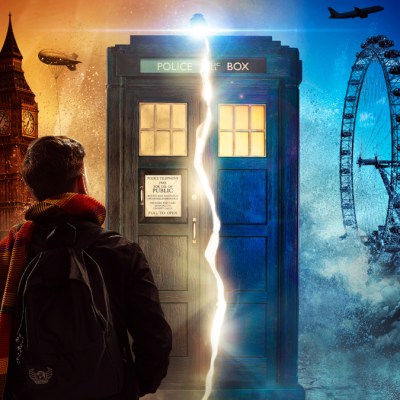Time Fracture: ‘It’s a Love Letter to All of Doctor Who, From William Hartnell to Jodie Whittaker’
The writer of new immersive Doctor Who theatre experience Time Fracture, open now in London, takes Den of Geek behind the scenes on its unique journey through space and time...
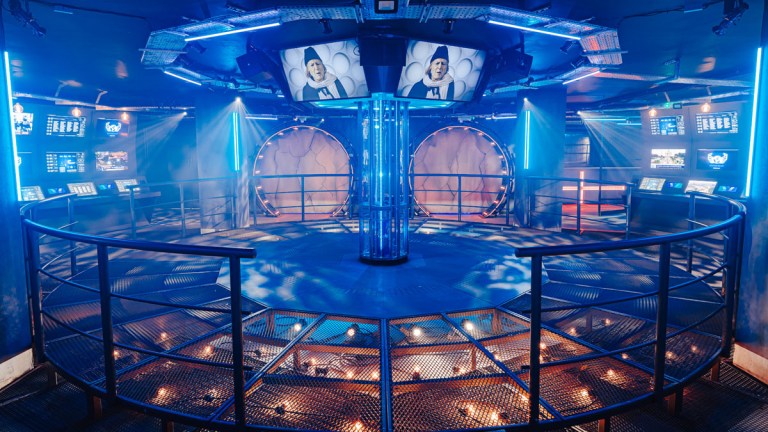
Doctor Who has spun off into so many different mediums you’d almost need a 500-year-diary to contend with it all. There are books, graphic novels, stage shows, annuals, computer games, board games, and full-cast audio adventures, to name but a smattering. Unbound from the strictures of television, this multiverse of shared pocket universes offers experiences and crossovers the likes of which those first children to huddle behind their sofas in fear of a black-and-white Dalek could only dream. The only thing a Doctor Who fan can’t do is physically inhabit the Who-niverse and feel a little of the excitement, intrigue and danger of what it is to be the Doctor or one of their companions.
Until now.
Doctor Who: Time Fracture, newly opened in London’s Bond Street, is an immersive theatre experience that pits its participants against a smorgasbord of baddies across space and time, giving them the chance to team up with, or become, their greatest heroes in a race to save the very universe. But what exactly is it; how does it work? What can people expect? And how did it come to be? Den of Geek spoke to the show’s writer Daniel Dingsdale to find out.
A Different Show For Every Visitor
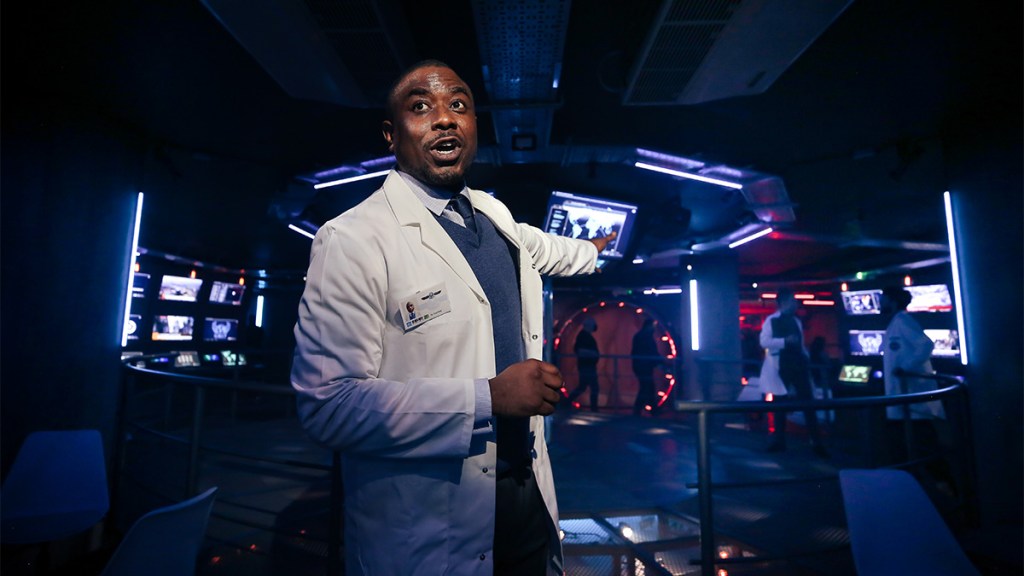
Our Zoom chat begins somewhere deep within the bowels of Time Fracture’s sprawling facility, but the signal keeps cutting out and rendering us in pixelated slow-motion – probably the Cybermen running interference – so Daniel swiftly whisks my avatar out onto the London streets. There’s a UNIT sign on one of the exit doors, the first of many Easter eggs in the Time Fracture tool-kit.
The background cacophony of cars and people serves as a stark reminder that life is slowly returning to normal here, a far-cry from the locked-down dystopia that saw Time Fracture’s original premiere date scuppered in 2020. Some things, though, are worth the wait.
“The entire show is a love letter to Doctor Who,” he begins, “and that’s not just the modern iteration from 2005: it’s a love letter to all of Doctor Who, from William Hartnell in the 1960s right through to Jodie Whittaker right now. That being said, we’ve also designed this to be a show that you can walk in off the street having never watched an episode of Doctor Who and still have yourself a really cool, fun romp through space and time. David Bradley said it very well: if you’re not a Doctor Who fan when you come in, I’m pretty sure you will be when you leave, and I agree with David.” David Bradley – Whodom’s latest First Doctor – is just one of a raft of Doctors to have been confirmed as appearing in the show.
Gleaning precise details about Time Fracture proves difficult. Not because Daniel is reticent to provide them. Far from it. He speaks quickly and excitedly, full of fervour for the show and its army of exceptional creatives. But because… well, it would spoil the surprise.
“Obviously we want to tantalise people and let them know that what they’re going to see is going to be worth their time and worth their money, and be exciting and engaging, but we really do want to keep as much back as possible, because you only get that joy – that surprise, that emotive response – once. Exploration is so key to this experience. We want you to explore, we want you to engage with the characters.”
This is what differentiates the show from regular theatre – with its rows of seats or proscenium arch – and makes it truly immersive: the expectation that the audience members will be “complicitly involved in the action that’s unfolding around them”. In this case, that means roaming through a vast studio landscape that’s populated with 42 different characters, spread across 17 fully-realised worlds, moving through a story that’s both rigorously planned and gloriously open-ended.
“The narrative has a defined beginning, middle and end, and an over-arching plot that will always happen,” explains Daniel. “However, how that happens is very much down to the audience and how they engage with that narrative – which characters they talk to, who they follow, who they choose to ally with – and as a result the show will be different for each and every audience member.”
An Adventure in Space and Time

The logistics of the experience have altered due to social distancing requirements, but, nevertheless, 300 people will arrive at each performance of the show, heading into the fray in staggered waves of 90. Each group will then explore a cluster of worlds and their mysterious inhabitants for 45 minutes at a time, before heading on to the next piece of the puzzle to make way for the plucky adventurers at their backs, and so on to the end, over a total performance-time of two hours and 15 minutes.
It must be both exhilarating and exhausting for the actors, to put it rather mildly. Daniel agrees. “When we’re in the second act of the play, there’s about 18 different narratives running concurrently next to each other, all locked together in different ways. Our 42 actors are not only delivering narrative in text and script, but are also improvising with the audience, because all of their lines are basically a massive monologue – the other part of the scene isn’t there yet. It’s a really big job, but they’re doing amazing work in the show.”
I put it to Daniel that Time Fracture director, Tom Mallen, must teeter daily on the cusp of a nervous breakdown. Daniel smiles. “Tom’s a brilliant immersive director. He’s wonderful at working with actors and shaping these kinds of stories. He’s got a great knowledge of the medium and a wonderful way of rallying the team, steering the ship.”
Tom and Daniel are veterans of the medium, having worked together on a great many projects, including an immersive production of The Great Gatsby in which Daniel – acting rather than writing this time – was directed by Tom.
Graduating to writing duties on such a vast project as this, and with a plot as rich and as complex as Doctor Who by its very nature demands, undoubtedly presented a great challenge to Daniel. How did he approach it? What was the creative process, from start to finish?
A Brief History of Time Fracture
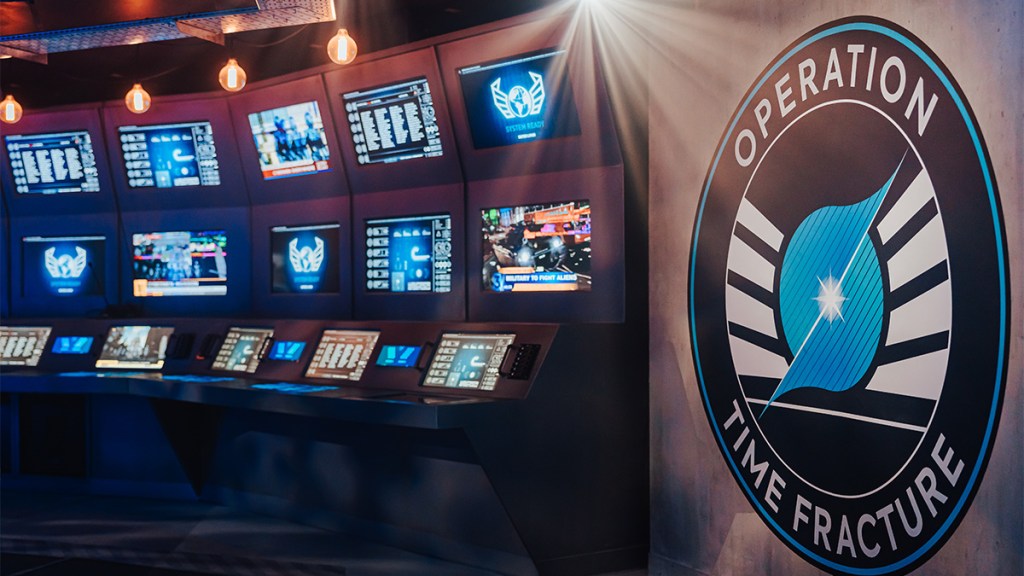
“It started off with a huge, deep dive into everything Who: watching hundreds of hours, right through from the 1960s to today, to find and to pull out the things and go, ‘Well, that’s definitely got to be in; that’s definitely got to be referenced in there’. I mean, we’re going from the idea that this is only happening once – this is the one, this is THE Doctor Who immersive show – so what would fans be disappointed if they didn’t see? And then, from there, coming up with an over-arching, big, broad narrative for the entire thing; all of the locations and characters, and how that all ties together, which eventually became the eponymous time fracture; this rift in space and time, which helps us link all of this stuff together.”
“And then it starts to break down into smaller and smaller bits: so the cast, on their first day, were presented with this huge document which we call the Beat Sheet, which has all the beats for each individual character in very, very great detail, and how they all slot together and spiderweb. And from there we start working with the cast, making those beats, creating those scenes, which then becomes set text.”
A mammoth undertaking. It’s easy to imagine some suit sitting in a dimly-lit office somewhere, nursing a bottle of whiskey, flicking through the script and occasionally stopping to spray out their drink in an apoplexy of panic. ‘HOW many different bloody planets has he written into this? FORTY-TWO alien costumes!! Why did I ever say no to producing that one-man play, ‘THE VOID’??’
Did Daniel have to beg, steal or borrow in order to realise his artistic vision?
“The producers, Immersive Everywhere, were amazingly supportive of the creative process. Almost nothing was said no to. We also had a lot of conversations with our creative partners over at the BBC. There was a lot of back and forth over, ‘These are the worlds we want to use; these are the characters we want to include’. Some of those are incredibly precious to them.”
But a session in Cardiff, on the set of the TARDIS itself, with the BBC’s Jeff Parker, during which Daniel outlined the show from start to finish, was met with enthusiastic approval.
“And from that day we haven’t had to make any changes. So everybody’s been really generous, both the BBC and our producers, in terms of helping realise this thing, and it’s all the better for it.”
A Long Line of Doctors
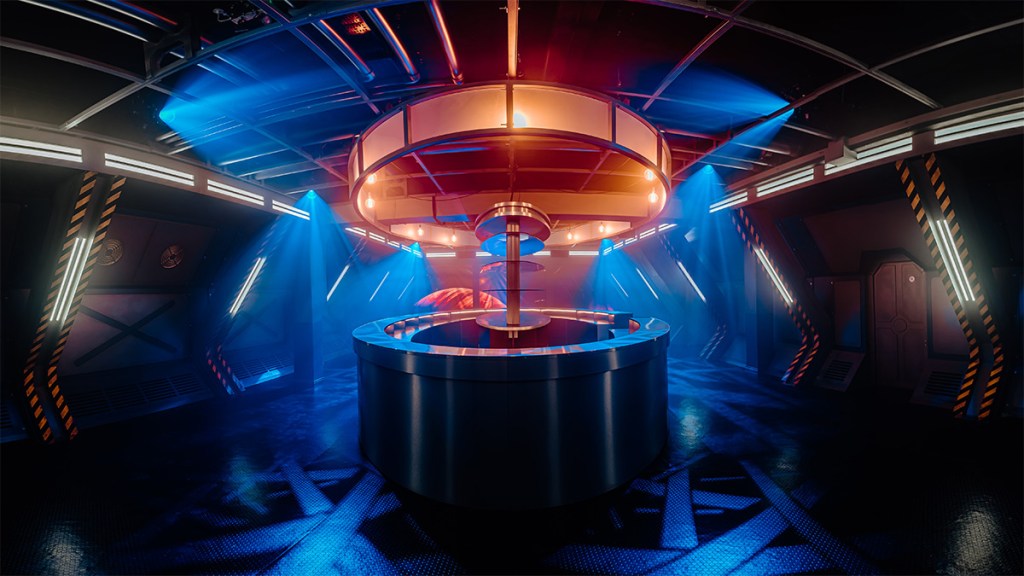
So what about Daniel’s Doctor Who credentials? Did he grow up cowering behind the upholstery too?
“I grew up in the Wilderness Years, just after Sylvester McCoy had gone off of the TV, but I still had the annuals. You still played it in the playground. I still had a favourite Doctor.” And that was? “Jon Pertwee. He had the frilly shirt and the cloak, and I thought he just looked really cool, and I liked his white hair. You know, I was seven, he just looked the best.”
Daniel enjoyed the Paul McGann movie, but it wasn’t until New Who that he started really paying attention. “I caught ‘The End of Time Part 2’ on New Years’ Day. It was when David Tennant regenerated into Matt Smith, and it was the last line that got me: ‘I don’t want to go’. I found myself crying. I had no real relationship with this character, but I was so moved, and I thought, ‘I’ve got to keep watching this’. And so I started from that. By the time Jodie was the Doctor, I already knew I was doing this, and I was right back at the beginning, right back in the 1960s, working my way through.”
What about his favourite Doctors now, both classic and contemporary?
“It’s potentially a cliché, but it’s a cliché for good reason, so I have to say my favourite classic Doctor is Tom Baker. I love the cosmic hobo nature of it; the smartest person in the room who is – what’s the quote – yes, ‘What’s the point of being an adult if you can’t be a little childish sometimes?’ Tom encapsulates a lot of what is quintessentially Doctor-y. Although a very close second is Patrick Troughton.”
For his contemporary choice, Daniel leans towards a spikier breed of Doctor. “Peter Capaldi is my Doctor. I was incredibly excited when he was announced, because I thought, ‘That’s a very different energy’. And he didn’t disappoint. He’s also in my favourite episode, ‘Heaven Sent’, which is just a beautiful soliloquy. One actor, one character, just talking their thoughts out loud for 45 minutes, and having it be so engaging and emotional.”
Daniel assures us that every Doctor will be represented in Time Fracture, in some form or another. Even the living ones who weren’t available to contribute. “Some of the Doctors everyone will see. Some of them you would have to be part of a certain story, talk to a certain person, to discover these things that are hidden around in parts of other stories. The performers who are no longer with us have been realised in a different way, but all of the doctors are present – either in video or vocally – because, again, this is a love letter to all of Who, and it was really important we got all of those voices together.”
Daniel issues a wry smile when de-ageing is suggested. “So, there are obviously people within the show who don’t look like their characters anymore, so they’re realised, perhaps vocally, or with something else you’ll be able to see when you’re there.” You won’t ever be stuck for Doctors when you attend the show. Not as long as there are hard-core fans out there with wardrobes stacked to bursting point with trench coats, bow-ties and multi-coloured dream coats.
“We’ve had several David Tennants. A couple of Patrick Troughtons. We’ve had some Peter Davidsons in. We’ve had a lot of Tom Baker scarves, but we haven’t had a full Tom yet. People are making an amazing effort; they’ve put on all of this stuff, got on the Tube dressed as a Doctor, travelled across London – probably getting some side eyes on the train – but when they come here, it’s a wonderful signifier to our performers that they’re ready to play. Really, if you want to come to Time Fracture and be the Doctor: we’re gonna see that you feel like the Doctor.”
You might even be lucky enough to share your evening with a bona fide star of the TV show. Several of the Doctors who filmed contributions for Time Fracture declined the offer of a tour, signalling instead that they’d prefer to come along themselves – some with their children or grandchildren – and participate as a punter: albeit an incredibly famous and potentially-storyline-altering one.
Losing John Barrowman
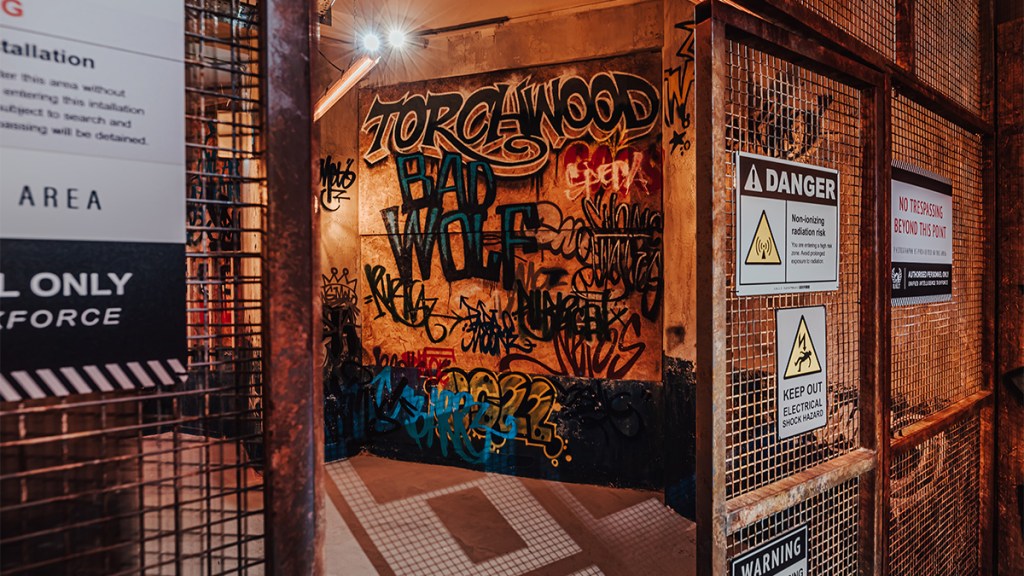
Next, we come to John Barrowman. The Captain Jack actor had previously publicly apologised for his backstage behaviour on the set of Doctor Who, but when allegations of sexual harassment were made against former co-star Noel Clarke, Barrowman again fell under the media spotlight. The renewed fallout saw him removed from both ongoing Big Finish productions and Time Fracture (he had already filmed a segment as Captain Jack). How did Daniel feel about this? How did the team adapt to losing Barrowman’s contribution?
“I’m here as a writer of the script, telling those stories, and, you know, it’s not a decision that I make nor am involved with. That being said, when that decision was made there were changes made within the story to fill that – that section – and there’s something very exciting that’s happening – that is indeed at this moment happening. We’ve got some more filming to do, which I think people will be very excited about.”
So anyone peeved at the exclusion of a long-standing fan favourite – whether their ire is justified or not – can at least take heart from the fact that something special and unexpected looks to be rising from the ashes.
The Future, and a Legacy

At present, the booking period for Time Fracture stretches into 2022, and London is its one and only hub. But there exists a scintilla of a chance that the show might tour. “We adore it, and we would love to be transferring it,” says Daniel. “I mean, Doctor Who‘s got fans all across the world, but it’s early days. We’ll get London bedded in first and then we’ll start conversations about Doctor Who somewhere else.”
London might seem as distant as Gallifrey to those living further afield in the UK, but this potentially once-in-a-lifetime chance to enter the Doctor’s world seems a shoo-in for anyone, anywhere, who has even a smidgeon of Who in their hearts. As Daniel explains:
“Every costume, every prop, every evocative light or piece of original score or sound design, it’s all been put together by a hive mind of extraordinary creatives. A lot of love has gone into creating the show, and we really hope that love is translated into the audiences’ experiences. It’s also important to say that this is a family show. We’ve already had children coming through the show having a whale of a time. You’ll find children who are 8 years old, standing next to someone who is 58 years old, and they’re both getting something out of it.”
This inclusive, multi-generational aspect of Doctor Who has always been one of its core strengths, but its core message, too, resonates strongly with Daniel.
“I think the whole thing about Who is decency, and kindness. To be a hero what you need to do is think, and talk. You need to be a good person. You don’t run around with a gun; you don’t fight your way out of something: you reason your way out of something, you think your way out of problems. And you make the best choice…You make the right choice.”
Tickets for Doctor Who: Time Fracture are available to book here.


